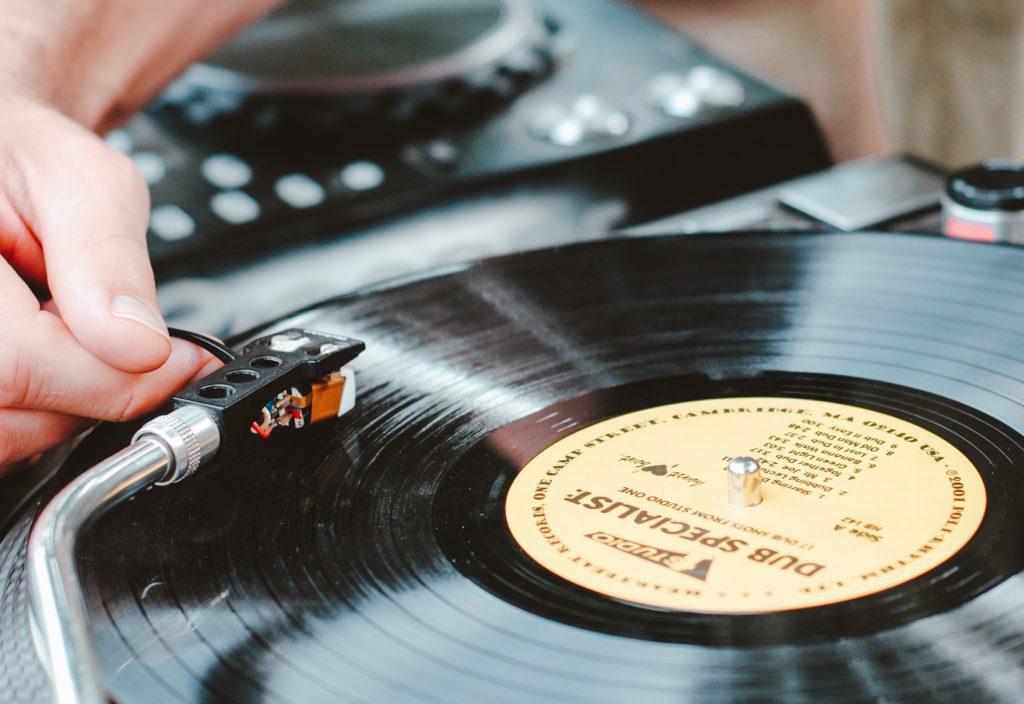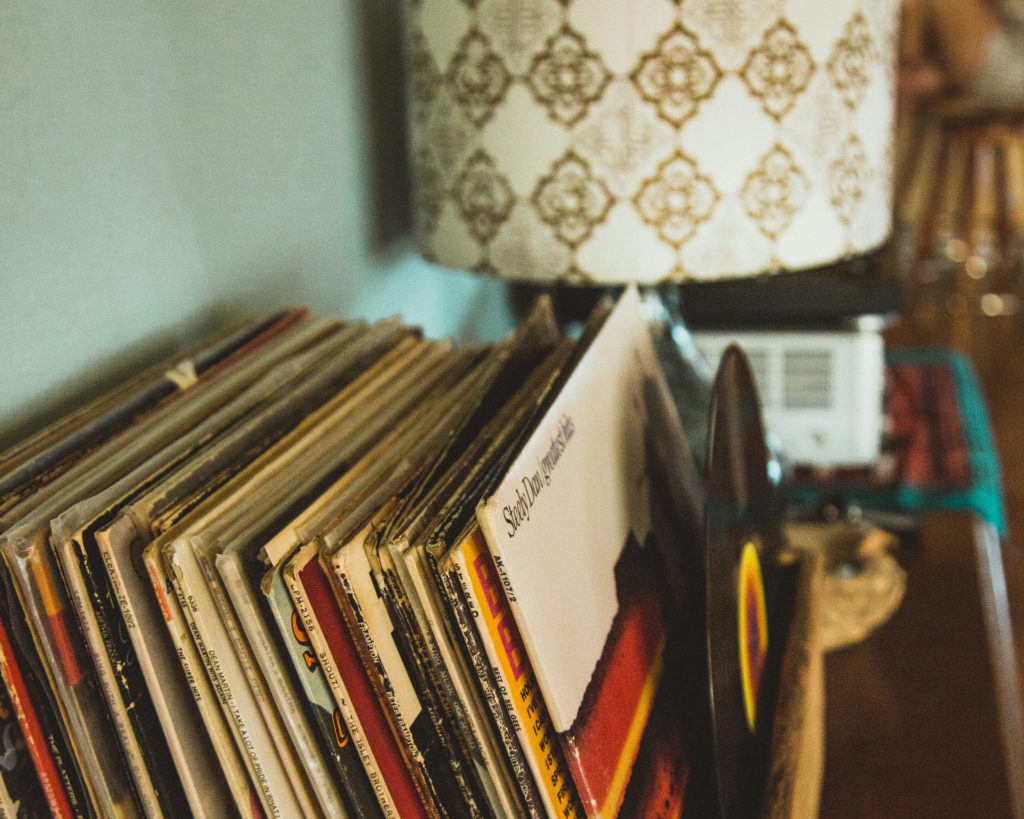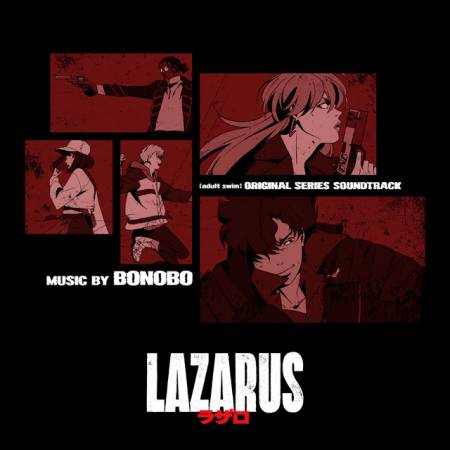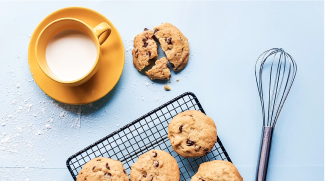- So what kind of music do you listen to?
- Well, you know, it’s really difficult for me to boil it down to one genre. I’d say progressive rock, hip-hop, jazz. But also electronic music, I’m really into dubstep for example.
- Dubstep? Really? Oh. Uh. Okay…
With a fair share of surprise and lowkey disgust, 99% of the people I’ve had this conversation with slowly but surely transition into a different topic. And this is understandable. What's generally considered dubstep in western pop culture is the distinct sound of heavy, aggressive, synth-driven EDM with wobbly saturated bass lines and punchy drums, popularized in the early 2010s by names like Bassnectar, Excision, and of course - Skrillex.
However, as you might, or might not know, the name of this genre dates back to an origin totally different from what I just described, both stylistically and sound-wise. So, then… which dubstep is really “dead”? Is it dead at all? If not, where is it now? Where is it headed in 2021? Besides answering these questions, this article will try to break the general stereotype of dubstep always being chaotic, saturated and overproduced. When dealing with such a topic, it’s best to work with examples, so I will showcase some beautiful melodic tracks (old and new) from the rather undiscovered by the masses melodic and deep side of the genre.
It would be a lie if I said this analysis had a single source of inspiration. It was a conglomeration of a multitude of factors. Here’s what to expect:
- evaluation of the impact which the stripped-down melodic dubstep tracks had (and continue to have) on the evolution of the whole genre
- an indirect response to the YouTube channel “Timbah.On.Toast” and continuation of the conclusion to the video essay “All My Homies Hate Skrillex. A story about what happened with dubstep.” (linked at the end of the article)
- personal opinions and conclusions e.g. out of love for the genre and the impact it had on my life as a music producer and listener
When deep-diving into a topic one has an emotional connection to it’s always difficult to stay 100% objective. So to help with that to some extent, this article includes some short interview answers from the members of Iceboxdub - a Bulgarian dubstep crew, that continues to support the genre on our local scene and stays in touch with the state of bass music in general.

Brief History and Evolution of Dubstep
With all of those disclaimers out of the way, it’s time to go a few years back to where it all began. The origin of dubstep is considered to be Croydon, London. After the late ’90s and throughout the mid-2000s dubstep was born as a response to UK garage music. It separated itself from the masses by becoming a more underground genre, characterized by deeper, bassier, and more minimal sounds than garage. However, just like every other music style that grows in popularity, the genre changed due to several reasons.
Stay up to date.
New music and exclusive updates in your inbox weekly.
In 2007 a smoking ban was reinforced in the UK. People were forbidden to smoke weed in dubstep clubs which made the majority of the audience feel bored with the slower deeper sounds of the music. People were left wanting more excitement and rush out of the music. Of course, the second factor for dubstep’s evolution into a harder, more hectic genre is… well, technology. It’s always technology, isn’t it… Commercial hi-fi speakers became more and more accessible and appeared in everyone’s home. Hearing the bass became more important than feeling it (like on a big sound system in a club). Both of those fan demands led UK dubstep producers and DJs to turn to more saturated mid-range bass lines. Wait a second. Hectic saturated bass lines? Sound familiar? Yeah…
One could say that the rudimentary stage of what British dubstep producers started mockingly calling “brostep” was happening in their own backyard… The early dubstep pioneer Mala elaborated in a recent interview for DJMag:
“That made a lot of people very, very angry,” he says, [referring to the boom in the US of names like Skrillex] “and rather than looking at it like ‘Look at what our small scene from London has achieved’, and take it as a chance for them to evolve their own sound, a lot of people just shut down. They felt so disgruntled by this new wave of music that they ruined their own creativity by focusing on all the negative energy. It was heavy. It seemed to become about competition, with people trying to assassinate people’s characters when they’re not there to defend themselves.”
With the so-called “brostep” reaching mass success and its sound achieving sort of a “meme status” in the early 2010s, the popularity of the genre seemed to gradually fade away. However, I would argue that the “original” dubstep culture has since emerged from the rubble and more or less continued to evolve, despite its turbulences. By no means should we undervalue American dubstep (brostep) or call it names. After all, this has happened before and the toxicity that followed wasn’t particularly pleasant. Besides, the American movement gave birth to some extremely talented producers! For the sake of this analysis though, let’s just ignore “brostep” for now and go back to UK dubstep.

The Exclusivity in Dubstep culture
It feels like all throughout its existence dubstep has always had an element of secrecy engraved deeply in its roots. The preferred method of releasing music by dubstep artists and labels has been (and to a degree still is) primarily vinyl. Dubstep DJs who like to stay true to the art only play vinyl records or the granddaddy of it all - dubplate.
What is a dubplate? Well, a typical picture disc vinyl is made up of two thin, clear sheets of vinyl. The picture card is placed in the middle of the two sheets, then they’re printed all together. The equivalent of one of those sheets of vinyl is used to cut what’s called a dubplate.
Dubplates are pressed in extremely limited quantities on very thought-out occasions (remixes, remakes, instrumentals, etc). They are almost exclusively intended to be exchanged between artists, producers and labels. That way DJs and producers always “have access” to something unique and physical, which ultimately cultivates the sincerity of the genre. To this day, besides vinyl, some of the best dubstep classics can be found online only through obscure rips on YouTube. Whether that’s subject to change with those older releases is entirely dependant on the landscape of the music industry and the mindset of producers and labels…
“The dubstep community and culture are very special. Nowadays it's a global movement and there are heads loving the sound all over the world, but it's still a very niche genre. In the early days, a big part of the development of the community was the dubstep forum. Radio stations also had a very important part in the history of the genre. As the saying goes - "music connects people" and dubstep does that in a very special way.”
- Iceboxdub
Beauty in “old-school” Dubstep
Although dubstep initially borrowed some elements from garage, back then it was the complete opposite. Not only the sound of garage, but also the aesthetic of the genre was extremely colorful, bright, and eccentric. Instead of colorful escapism, dubstep embodied the sound of UK’s grey, brooding, alienated and cold realism. It encapsulated the sonic metaphor for London’s urban jungle. The bass was deep and full like the sheer size of the city itself and the minimalist melodies were reminiscent of the flutter echoes reflecting from windows in every narrow blind alley.
“The love for dubstep, in particular, comes from back in the day when it wasn't that popular. It was very underground and it was all about the music. All about the low-end frequencies that you are able to feel on a proper sound system. A very physical experience. As much as we love the bangers and the party vibes our true love for dubstep lays in its depth.”
- Iceboxdub
Talking about the deep bass is something we can always count on when discussing dubstep. However, what sets dubstep apart, in my opinion, is the way it utilizes melodic sampling. This music production technique is used all over the place from hip-hop through to house and funk - it’s literally everywhere. That being said, there seems to be something special about dubstep samples, something I can’t quite compare to any other music genre. Besides the usual samples from old records, many of the dubstep tracks implement spoken word movie quote samples, snippets from interviews, or other conversational material, which takes a whole new meaning once it’s blended in a musical context.
In my opinion, there’s no better way to illustrate this point than through Kromestar’s & Jay5ive’s track “Words”.
As soon as a mate of mine played me “Words” for the first time, my mind was completely blown. Not because the sounds on the song are unlike anything I’ve heard before, in fact, they are honestly quite unremarkable on their own. But because of the way all the instruments are combined together, this track would go on to change my perception of music from that moment on.
Everything about it is so elegant and flawless. The sampled phrase from “The Davinci Code”, spoken by Tom Hanks melds beautifully into the aesthetic of the track. The sample poses a mysterious question which the melodies of the track develop into a musical answer. Once existing within the arrangement of the track and not on the big screen, the quote has a completely new emotional effect, which is what makes the track so powerful. The drums are punchy, yet clean, the guitars sound pristine and not overproduced, the automated panning of the flute makes the track feel wide, while the bass is so warm, full and soft that it almost can’t be called a dubstep bass. And that’s exactly the point - it doesn’t have to be considered dubstep bass to be part of the genre anyways. It’s really counterproductive to get worked up about style definitions when the music is all that matters. To me, “Words” is the best example of how colorful and multidimensional dubstep (or any other genre) can be, so our "job" as music lovers is to explore and enjoy these differences without any preconceptions.
“Good Old Days” by Jack Sparrow is a similar story - it samples a snippet from a documentary about jazz saxophonist Coleman Hawkins’s life. Comparable to “Words”, the beat drops right after the end of the spoken phrase, giving the track a really strong emotional impact. Occasionally affected by groovy delay/reverb effects, the varied percussion dances on top of the huge-sounding sub, while the brass phrases define the jazzy retro touch of the whole track.
With Mala’s “Alicia” things get into a bit of a different territory. The track samples Alicia Keys’ “Feeling U, Feeling Me” - the interlude of the American singer’s second album The Diary Of Alicia Keys. By adding a sub bassline, crisp drums and some other variations to the sample, Mala’s track has become one of the finest examples of soulful and melodic music production that dubstep has ever seen.
Another one of the ultimate classics, “Summer Dreams” by Skream is similarly soulful and jazzy, though we’re now talking less about samples and more about playing. The trumpet on this track, performed by Martin Shaw, offers some gorgeous dazzling melodies for the whole 8 minutes of the track, corresponding beautifully to the tune’s vibe stated in the title.
Melody in Contemporary Dubstep
So, does the melodiousness of dubstep only stay within the timeframe of the pre-2010 classics? Releases from the last couple of years don’t seem to think so. Let’s compare some of them:
Commodo has been taking UK dubstep in a really interesting direction for quite some time now by infusing clean brain-rattling bass and delicate melodic motifs with a pluck-like feel. Daytona is the clearest example and a must-listen for anyone wanting to dive deeper into the current state of the genre.
By introducing a continuous saxophone performance in his track “Oaken” Taiko has a similar melodic approach to Skream in “Summer Dreams”. However, the track takes the bright vibe a step further by blending in a reggae-dub feel in the drum groove.
The Spanish music producer Kodama stays true to the “old-school” mysterious, nostalgic and pensive feel of melodies and spoken word samples, but adds a contemporary feel with some groovy hi-hats and almost modern hip-hop sounding percussion.
The duo Glume and Phossa on the other hand often experiment with exotic sounds putting their sound in an interesting place stylistically - somewhere between melodic and uplifting, yet dark and creepy.
What are some tendencies you hear in the dubstep tracks from the last 2-3 years?
“The oriental sound is really trendy. As grime became a very popular genre worldwide there is a lot of influence from that sound. The dubby/reggae dubstep never goes out of fashion so there's that as well.”
- Iceboxdub
Another interesting direction that the genre seems to be taking as of late is the inclusion of more and more female vocal performances on dubstep tracks. Lately some very talented female dubstep producers/beatmakers are emerging on the scene more than ever. It’s possible that some of the early vocal dubstep tracks had something to do with it, but whether “Shallow” by 16Bit or “Altar” by Kahn and Jasmine have had a direct influence on tracks like “Island” by Animal or “Society” by Mystic State and Astrid, we can’t say for sure. What is certain though, is the fact that dubstep is becoming even more colorful and inclusive when it comes to different social and cultural backgrounds. Yet another reason to support the genre’s growth!
Dubstep in 2021 and the Future
It’s extremely difficult, if not impossible, to convince people of something if their opinion is strongly influenced by personal emotional experiences. I can sit here all day debating how metal music isn’t only in the past, how it’s evolving and still capable of filling up stadiums. But if I’m explaining that to a person who grew up in the 80’s only listening to Metallica, whose dreams were shattered by the band’s albums after Master Of Puppets, then I don’t really have much chance in changing their personal history with the music. Similarly, many true dubheads who witnessed at first hand the birth of dubstep in the UK might still find that the beauty of the original old-school music is unmatched in today’s music releases.
“There are a lot of artists and labels putting out quality music, so the genre is better than ever. It's always evolving and actually, nowadays there are many more labels. You literally can spend your whole day listening to new dubstep music. And there are so many exciting new emerging artists! Chief Kaya, Kodama, Imajika, Yoofee, Ourman, Somah, Quasar and many others have been putting out great tunes during the last year. Glume and Phossa started putting out music in 2018/19 and don't have a weak release until date. The list can probably go on forever.”
- Iceboxdub
It’s completely understandable and natural to have a bias towards art. But my message as a young person, born in the 2000s, is that we should try to stray away from hastily categorizing music genres or other large-scale cultural movements as “dead” or “gone”. Instead, it’s best to always strive to be curious and open-minded to explore how a certain cultural phenomenon evolves over time.
Thank you so much for diving into this lengthy read with me! It certainly means a lot if you’ve made it this far.
As mentioned in the intro, one of the many inspirations behind me opening up with my take on the melodic side of dubstep and the future of the genre is this extremely thorough and brilliant video essay. Although I wasn’t particularly fond of the ending, I completely value its message, so it’s still astonishing and worth watching!
Big thanks to the guys at Iceboxdub who provided their views on the topic as well! You can follow them on Instagram and Mixcloud!
And as a bonus gift to those of you who are interested in hearing more, I made a Spotify playlist, consisting of some all-time favorite dubstep tracks. The playlist tries to emphasize modern fresh finds, but some older heavier dubstep classics are definitely appearing here and there as well. Enjoy!







